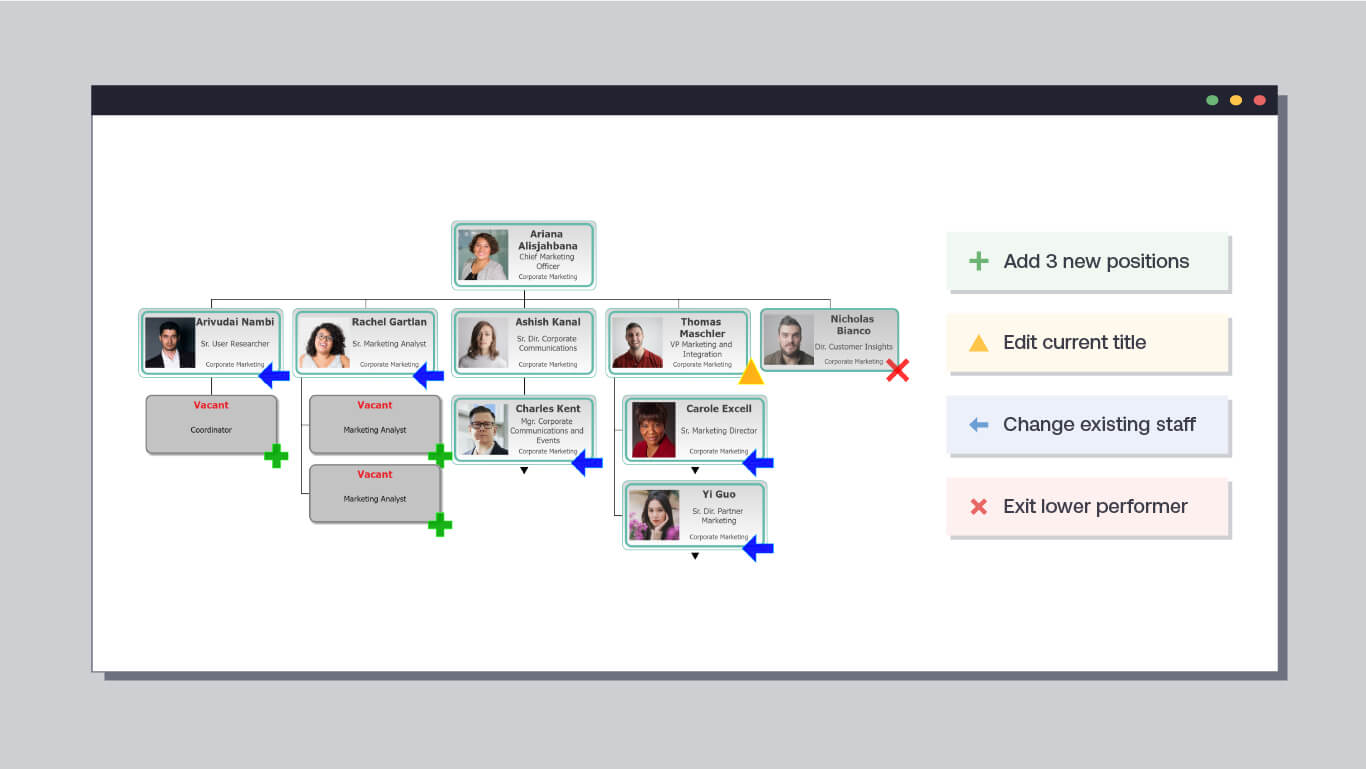OrgChart Team
March 21, 2023
Amidst so much uncertainty, how can organizations efficiently and effectively find and hire the right people? Workforce planning from OrgChart is a great place to start.…

As anyone in HR who is charged with workforce planning can attest, the 2023 economic narrative might feel somewhat contradictory. Amidst the post-pandemic backdrop of continuing inflation, the possibility of a recession, and a spate of Q1 layoffs in the tech sector and beyond, economists forecast a labor shortage — perhaps for years to come.
Already dealing with time and resource constraints around recruiting and applicant screening, HR must now contend with a host of issues, from changing demographics to immigration issues affecting the labor market.
“It is a fundamental error to think that as COVID-19 recedes, hiring difficulties will evaporate,” said Svenja Gudell, chief economist at Indeed, in a recent Society for Human Resource Management article. “Deep-seated and long-term supply dynamics will continue to be a major force that creates a persistent gap between employer demand for new hires and the supply of candidates.”
Amidst so much uncertainty, how can organizations efficiently and effectively find and hire the right people, with the right skills, for the right roles, at the right time? These challenges can be complex and multifaceted, requiring a strategic and proactive approach. Here, we’ll discuss how the latest advances in workforce planning can help HR departments develop targeted recruitment strategies, prioritize diversity, equity, and inclusion in hiring practices, and optimize the hiring process.
“Workforce planning” might feel like a catchall term for a variety of HR activities. Still, they all contribute to the same end goal: aligning an organization’s labor force with its strategic objectives.
For decades since the post-World War II era of industrialization, workforce planning involved assessing an organization’s current staff and determining how to work more effectively. The manufacturing industry, for example, required a large pool of skilled workers to produce goods efficiently.
With advances in technology, new approaches to workforce planning emerged. Throughout the 1960s and 1970s, organizations began forecasting labor supply and demand via early computer simulations.
Only in the last two decades of the 20th century did workforce planning become more strategic. In addition to more advanced forecasting, organizations started capturing and analyzing workforce data to identify skills and competencies needed to meet specific job requirements. HR departments also developed strategies to attract, develop, and retain this highly skilled workforce.
Fast forward to the Covid-19 pandemic — workforce planning became a critical function for all organizations, regardless of size, industry, or geography. The HR department had to respond to unprecedented changes in the business environment and effectively manage a primarily remote workforce. With the increasing pace of technological change and disruption in the global economy, workforce planning has become even more critical for organizations to remain competitive and to adapt to new challenges and opportunities.
If we’re limited to one key business takeaway from the pandemic, it would be this: In a global, interconnected economy, organizations can mitigate risk with clearly defined and easily accessible workforce metrics.
A dynamic, data-driven org chart is the first step toward facilitating the complex workforce planning initiatives HR departments face related to:

Keeping in mind that this is one tool in the hiring process, here are some ways OrgChart helps organizations match the best applicants with your workforce needs.

Restaurant Hierarchy Chart: Structure & Roles…
Restaurants are arguably the busiest businesses out there, with servers, cooks, managers, and executives working hard to ensure every guest has a stellar…
Read Article
Managing Positions in a Company Chart: Strategies for Modern HR Teams…
As companies grow beyond 100 employees, managing organizational structure becomes exponentially more complex. HR professionals need an advanced, dynamic…
Read Article
Healthcare Organizational Chart: Structure, Examples & How to Build One…
Explore the power of People Analytics. Unlock data-driven HR strategies to optimize your workforce with our tools.…
Read Article